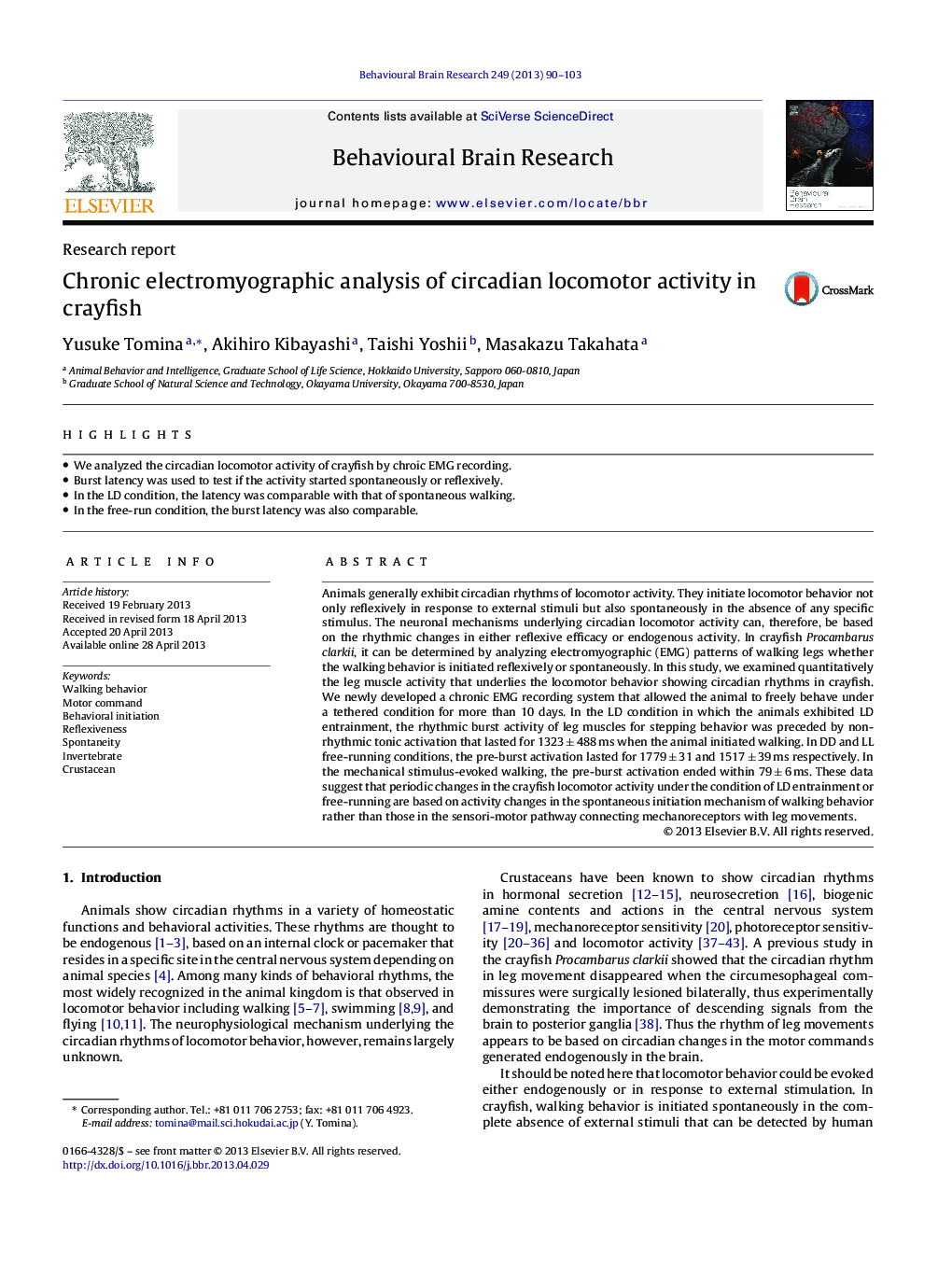| کد مقاله | کد نشریه | سال انتشار | مقاله انگلیسی | نسخه تمام متن |
|---|---|---|---|---|
| 6259114 | 1612983 | 2013 | 14 صفحه PDF | دانلود رایگان |
- We analyzed the circadian locomotor activity of crayfish by chroic EMG recording.
- Burst latency was used to test if the activity started spontaneously or reflexively.
- In the LD condition, the latency was comparable with that of spontaneous walking.
- In the free-run condition, the burst latency was also comparable.
Animals generally exhibit circadian rhythms of locomotor activity. They initiate locomotor behavior not only reflexively in response to external stimuli but also spontaneously in the absence of any specific stimulus. The neuronal mechanisms underlying circadian locomotor activity can, therefore, be based on the rhythmic changes in either reflexive efficacy or endogenous activity. In crayfish Procambarus clarkii, it can be determined by analyzing electromyographic (EMG) patterns of walking legs whether the walking behavior is initiated reflexively or spontaneously. In this study, we examined quantitatively the leg muscle activity that underlies the locomotor behavior showing circadian rhythms in crayfish. We newly developed a chronic EMG recording system that allowed the animal to freely behave under a tethered condition for more than 10 days. In the LD condition in which the animals exhibited LD entrainment, the rhythmic burst activity of leg muscles for stepping behavior was preceded by non-rhythmic tonic activation that lasted for 1323 ± 488 ms when the animal initiated walking. In DD and LL free-running conditions, the pre-burst activation lasted for 1779 ± 31 and 1517 ± 39 ms respectively. In the mechanical stimulus-evoked walking, the pre-burst activation ended within 79 ± 6 ms. These data suggest that periodic changes in the crayfish locomotor activity under the condition of LD entrainment or free-running are based on activity changes in the spontaneous initiation mechanism of walking behavior rather than those in the sensori-motor pathway connecting mechanoreceptors with leg movements.
Journal: Behavioural Brain Research - Volume 249, 15 July 2013, Pages 90-103
